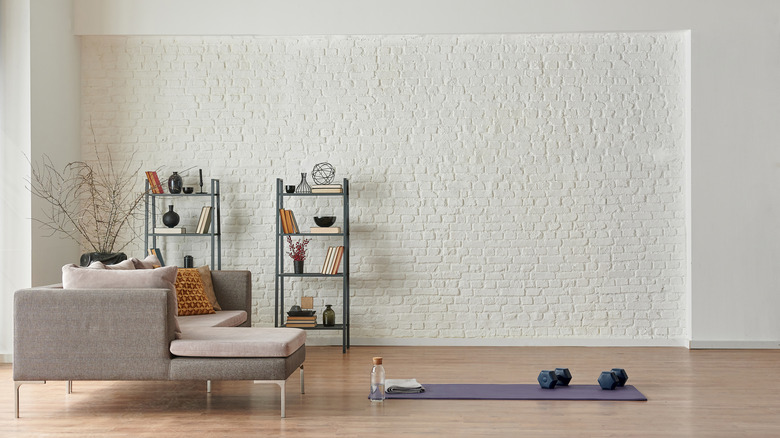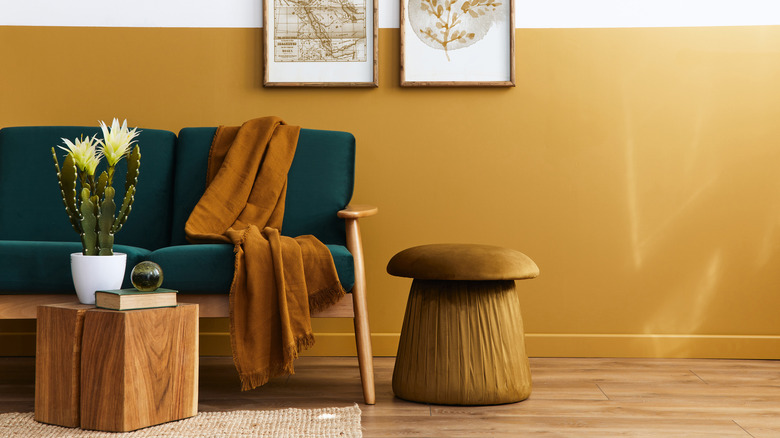The Best Way To Organize Your Living Room, According To Vastu Shastra
Have you ever wondered why some homes feel more comfortable than others? Or why it feels like one place has a certain energy or mood? It could be that the house was designed and organized according to Vastu Shastra, an ancient practice from India that is all about creating harmony in your living space. If you've ever felt like your living room isn't quite right, you might consider organizing it according to Vastu Shastra. Vastu shastra is based on the belief that the physical environment affects our mental, emotional and spiritual well-being. It suggests ways of arranging furniture and other items that promote peace and harmony.
Vastu Shastra is a practice that focuses on the five elements of nature — fire, water, earth, air, and space — to create balance in our lives. According to Vastu Shastra, this is known as Paanchbhootas. The idea behind this ancient practice is that when these elements are balanced within our environment, we experience greater health and well-being. This means you should focus on bringing these elements into harmony when organizing your living room according to Vastu Shastra principles. In this article, we'll go over some of the best tips for arranging your living room for maximum peace and harmony according to the principles of Vastu Shastra.
Position the furniture strategically
When organizing your living room according to Vastu Shastra principles, there are several things to keep in mind. According to Housing, it's best if your living room faces east, north, or northeast. However, the furniture's positioning is the most important thing to consider when organizing your living room, according to Vastu Shastra. For starters, make sure that any furniture or items in the room are placed in such a way as to create an even flow of energy throughout the space. This means avoiding clutter and ensuring that pathways remain open and unobstructed.
It's also important to be mindful of which direction each piece of furniture faces. Any electronics in the room should be placed in the southeast section of the space, making this the perfect spot for a television. Heavy furniture, like a couch, on the other hand, should be positioned in the western or southwestern direction. Additionally, it's essential to pay attention to what items are placed in each corner; for example, placing plants or water features in the northeast corner will bring prosperity into your living space. Finally, make sure your furniture is comfortable so you can enjoy spending time in your living room. A room organized based on Vastu Shastra is supposed to bring financial prosperity, career stability, academic growth, and good health to those who live there, according to Building and Interiors.
Choose colors carefully
Color dramatically influences how we feel when we enter a space. In Vastu Shastra, different colors are believed to affect a room's energy uniquely. For example, red is believed to be associated with luck and prosperity, while blue is associated with peace and tranquility. Different shades of these colors can also be used depending on what kind of energy you want in your space. When choosing colors for your living room based on Vastu Shastra principles, there are specific guidelines you should follow. Housing recommends either white or yellow for a living room when decorating. Bright colors are best avoided as they can be too stimulating and distracting. Instead, opt for more muted shades like blues and greens to help promote relaxation and balance within the space. It's also important to note that too much of any one color can overwhelm a room, so it's best to use them sparingly or mix them with other colors if you want more depth in your décor.
Another tip is to add greenery to the space. Plants are known for their calming properties, so including one or two in your living room can help create an oasis of peace and tranquility. Choose plants with broad leaves like ferns or rubber trees — these plants will add texture and interest without overwhelming the space with too much greenery.


